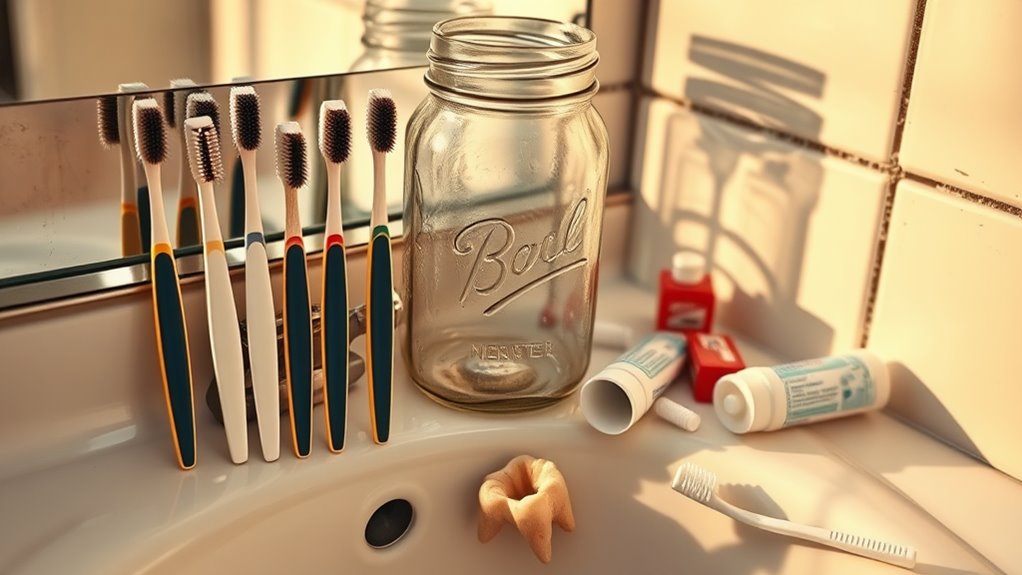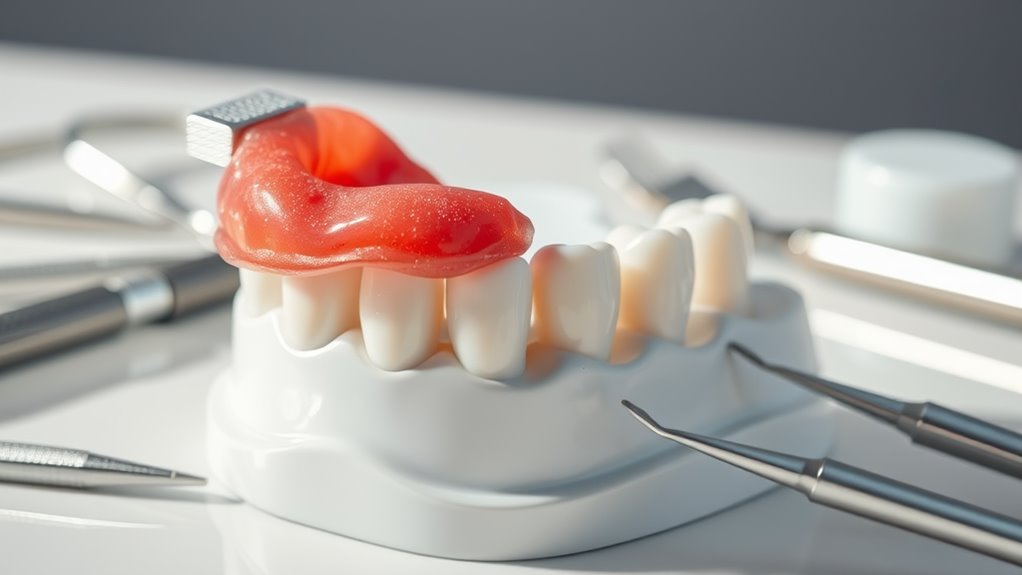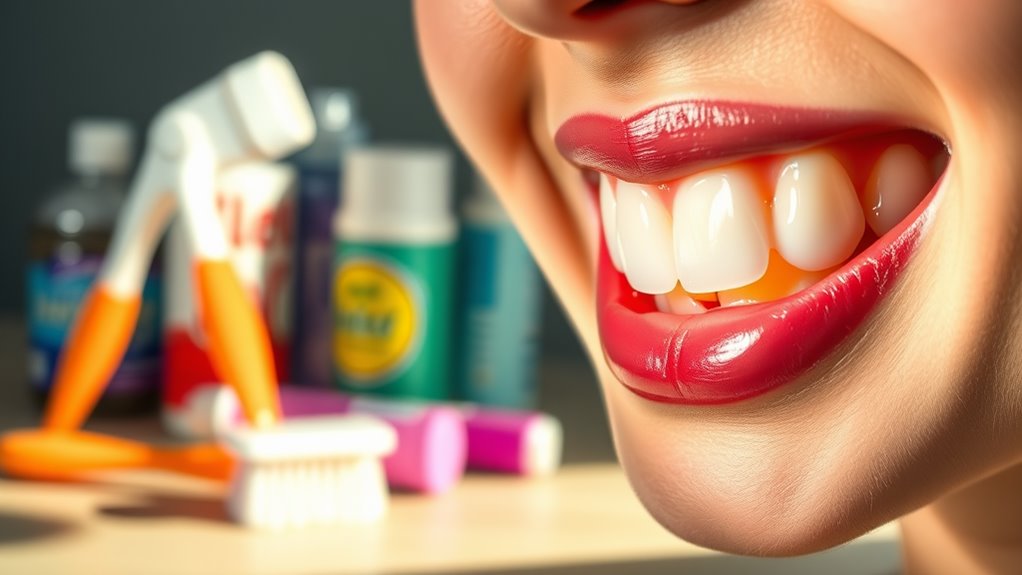Stop Believing These 7 Dental Myths That Are Destroying Your Teeth!
Don’t let common dental myths ruin your oral health. Sugar-free drinks can still erode enamel, white teeth aren’t always healthy, and aggressive brushing does more harm than good. Your bleeding gums aren’t normal, and you can’t blame genetics for poor dental health. These misconceptions lead to serious dental problems that could cost you thousands in treatments. Learn the truth about these myths to protect your smile for years to come.
The Sugar-Free Myth: Why “No Sugar” Doesn’t Mean “Safe for Teeth”
While many people believe sugar-free foods and drinks can’t harm their teeth, this common misconception overlooks the role of acids in tooth decay.
Sugar-free sodas, energy drinks, and citrus-flavored beverages still contain high levels of citric and phosphoric acids that erode your tooth enamel. Even sugar-free candies often include acidic flavoring agents that can damage teeth.
You’ll find acids lurking in many sugar-free products, from diet sodas to flavored waters and sports drinks. These acids weaken your enamel‘s protective surface, making your teeth more susceptible to sensitivity and decay.
When you consume acidic beverages, you’re better off drinking them quickly rather than sipping throughout the day, and always rinse with water afterward to help neutralize the acid’s effects.
White Teeth Don’t Always Equal Healthy Teeth
Just as sugar-free doesn’t guarantee dental safety, the color of your teeth isn’t a reliable indicator of their health.
While naturally white teeth look attractive, they can still harbor cavities, infections, or structural damage beneath their surface. Conversely, slightly yellow teeth may actually be stronger and healthier due to thicker enamel.
Your teeth’s natural shade is largely determined by genetics, and some medications or health conditions can affect their color.
Even if you maintain perfect oral hygiene, your teeth mightn’t achieve that gleaming Hollywood white.
What matters most is the strength of your enamel, the health of your gums, and the absence of decay.
Instead of focusing solely on whiteness, work with your dentist to ensure your teeth are functionally healthy and strong.
The Truth About Hard-Bristled Toothbrushes and Aggressive Brushing
Many people believe that brushing harder with stiff bristles will lead to cleaner teeth, but this aggressive approach can actually damage your oral health.
Hard-bristled brushes combined with forceful scrubbing can wear down your tooth enamel, cause gum recession, and create sensitive teeth over time.
You’ll get better results using a soft-bristled toothbrush and gentle, circular motions.
Think of brushing your teeth like polishing fine china – you don’t need intense pressure to remove plaque and food particles.
Just spend two minutes brushing thoroughly, making sure to clean all surfaces of your teeth and along the gum line.
If you’re unsure about your technique, ask your dentist to demonstrate proper brushing methods at your next checkup.
Why Bleeding Gums Aren’t Normal During Brushing
Speaking of proper brushing techniques, let’s address a common misconception about bleeding gums.
If your gums bleed when you brush or floss, it’s not normal – it’s actually a warning sign of gingivitis, the early stage of gum disease. Healthy gums don’t bleed during regular oral care.
The bleeding occurs because bacteria have built up along your gum line, causing inflammation and sensitivity.
When left untreated, this condition can progress to periodontitis, leading to tooth loss and bone damage.
If you notice bleeding, don’t stop brushing or flossing. Instead, maintain consistent oral hygiene and visit your dentist.
They’ll assess the situation and might recommend a professional cleaning.
With proper care and attention, you can reverse early gum disease and restore your gums to health.
Debunking the “Bad Teeth Genes” Excuse
Have you ever blamed your dental problems on genetics? While there’s some truth that genetics can influence your oral health, it’s not the main factor determining your dental destiny. You can’t simply write off cavities or gum disease as inherited traits.
The reality is that poor oral hygiene habits, diet choices, and lifestyle factors play much bigger roles in your dental health than genetics.
Even if you’re predisposed to certain dental issues, proper brushing, flossing, regular dental visits, and a low-sugar diet can prevent most problems.
Your genes don’t cause tooth decay – bacteria do, and they thrive on sugar and poor oral care.
Don’t use the “bad teeth genes” excuse to avoid taking responsibility for your dental health. Your habits matter more than your heredity.
The Real Impact of Baby Teeth on Adult Dental Health
While some parents dismiss baby teeth as temporary placeholders, these first teeth play a crucial role in your child’s long-term dental health. Baby teeth guide permanent teeth into their proper positions and help develop proper speech patterns.
When you lose baby teeth too early due to decay or injury, the remaining teeth can shift, causing alignment problems for incoming adult teeth. Neglecting baby teeth can also lead to painful infections that may damage the developing permanent teeth underneath.
Poor oral habits during the baby teeth phase often carry over into adulthood, setting the stage for future dental problems. If you want your child to have healthy adult teeth, you’ll need to establish good dental care routines early and treat those baby teeth with the same importance as permanent ones.
Why Pain Isn’t Always the First Sign of Dental Problems
Many people wait for tooth pain before scheduling a dental visit, but this approach can lead to serious complications.
By the time you experience pain, the dental issue has often progressed significantly, requiring more extensive and expensive treatments.
Dental problems can develop silently for months or even years before causing discomfort.
Here are key issues that often progress without pain:
- Gum disease in its early stages (gingivitis)
- Small cavities that haven’t reached the nerve
- Hairline cracks in tooth enamel
- Root canal infections in their initial phase
You shouldn’t rely on pain as your signal to seek dental care.
Regular checkups every six months can catch these problems early, saving you from unnecessary suffering and costly procedures down the road.




